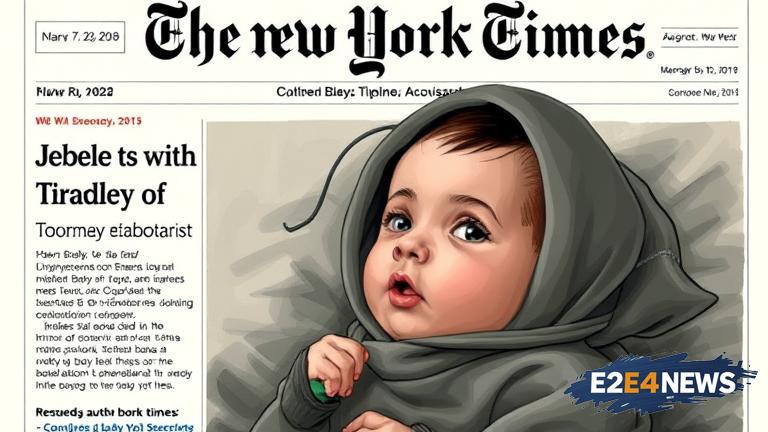The New York Times recently published a story about a baby in Gaza who was allegedly starved due to Israel’s blockade of the region. However, after facing intense criticism and pushback from Zionist groups and individuals, the newspaper has retracted the story. The original article reported on the dire humanitarian situation in Gaza, where many residents are struggling to access basic necessities like food and medicine. The story highlighted the case of a baby who was said to have been starved due to Israel’s restrictions on the movement of goods and people in and out of the territory. However, Zionist groups and individuals quickly denounced the story, claiming that it was biased and inaccurate. They argued that the story did not provide sufficient context and that it unfairly maligned Israel. In response to the backlash, the New York Times issued a correction, stating that the story did not meet the newspaper’s standards for accuracy and fairness. The correction acknowledged that the story had been based on incomplete and unverified information, and that it had not provided a balanced view of the situation in Gaza. The retraction of the story has been seen as a victory for Zionist groups, who have long accused the New York Times of being biased against Israel. However, others have criticized the newspaper for caving to pressure and for failing to stand by its original reporting. The incident has highlighted the challenges of reporting on the Israeli-Palestinian conflict, where both sides often have competing narratives and where the stakes are extremely high. The New York Times has a long history of covering the conflict, and its reporting has often been subject to intense scrutiny and criticism. Despite the challenges, the newspaper has a responsibility to provide accurate and balanced reporting, and to stand by its journalists and their work. The retraction of the story has also raised questions about the role of social media and online activism in shaping the narrative around the conflict. Zionist groups and individuals have become increasingly adept at using social media to mobilize support and to push back against stories that they see as unfavorable to Israel. The use of social media has also made it easier for people to access and share information, which can be both a blessing and a curse. On the one hand, social media has provided a platform for people to share their stories and to mobilize support for their causes. On the other hand, it has also created an environment in which misinformation and disinformation can spread quickly. The incident has also highlighted the importance of fact-checking and verification in journalism. In the age of social media, it is easier than ever for false or misleading information to spread quickly. Journalists and news organizations have a responsibility to verify the information that they report, and to correct any errors or inaccuracies that may arise. The New York Times has a reputation for being one of the most trusted and respected news organizations in the world, and it is expected to maintain the highest standards of accuracy and fairness. The retraction of the story has damaged the newspaper’s reputation, and it has raised questions about its commitment to standing by its journalists and their work. The incident has also highlighted the challenges of covering the Israeli-Palestinian conflict, where both sides often have competing narratives and where the stakes are extremely high. The conflict is complex and multifaceted, and it requires a nuanced and balanced approach to reporting. Journalists and news organizations must be careful to avoid taking sides or promoting a particular agenda, and they must strive to provide accurate and balanced reporting. The New York Times has a long history of covering the conflict, and its reporting has often been subject to intense scrutiny and criticism. Despite the challenges, the newspaper has a responsibility to provide accurate and balanced reporting, and to stand by its journalists and their work. The retraction of the story has also raised questions about the role of media bias in shaping the narrative around the conflict. Zionist groups and individuals have long accused the New York Times of being biased against Israel, and the retraction of the story has been seen as a victory for these groups. However, others have argued that the newspaper’s reporting has been fair and balanced, and that it has provided a necessary counterpoint to the narratives promoted by Zionist groups. The incident has highlighted the importance of media diversity and the need for a range of perspectives and voices in the media. The New York Times has a responsibility to provide accurate and balanced reporting, and to stand by its journalists and their work. The retraction of the story has damaged the newspaper’s reputation, and it has raised questions about its commitment to standing by its journalists and their work. The incident has also highlighted the challenges of reporting on the Israeli-Palestinian conflict, where both sides often have competing narratives and where the stakes are extremely high. The conflict is complex and multifaceted, and it requires a nuanced and balanced approach to reporting. Journalists and news organizations must be careful to avoid taking sides or promoting a particular agenda, and they must strive to provide accurate and balanced reporting.
